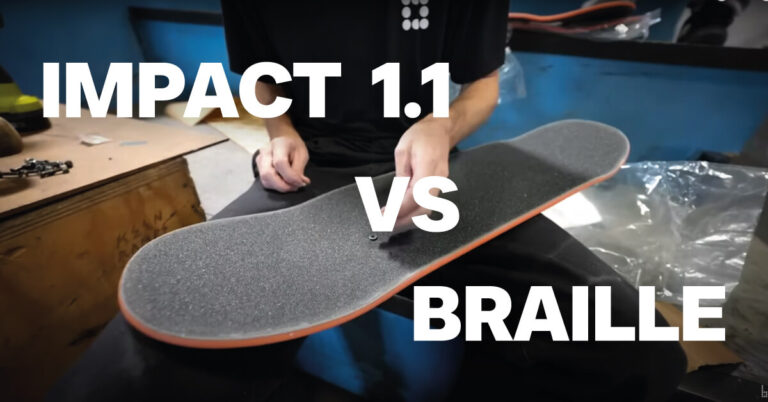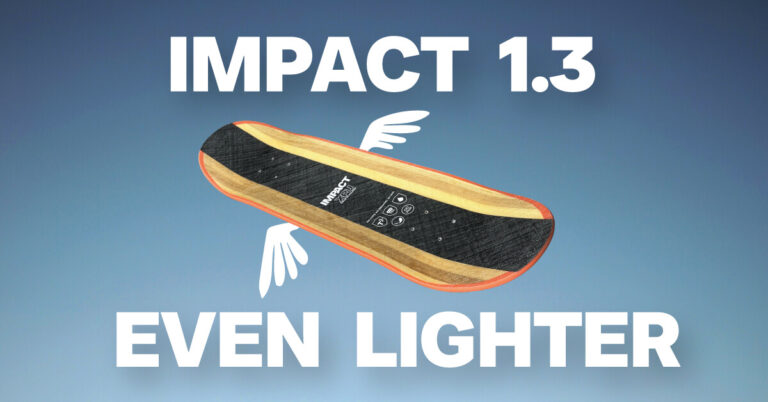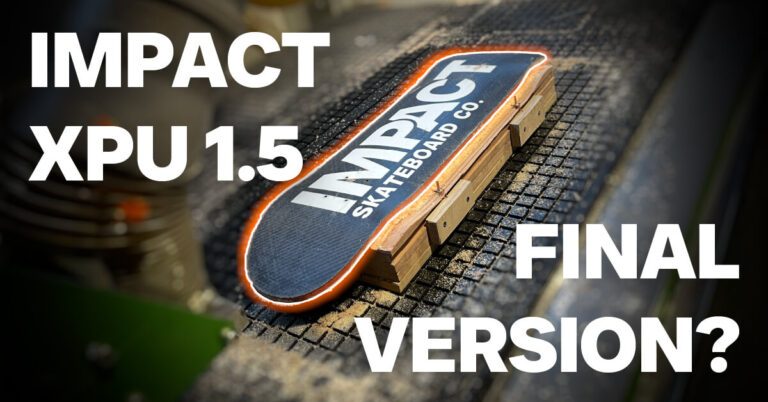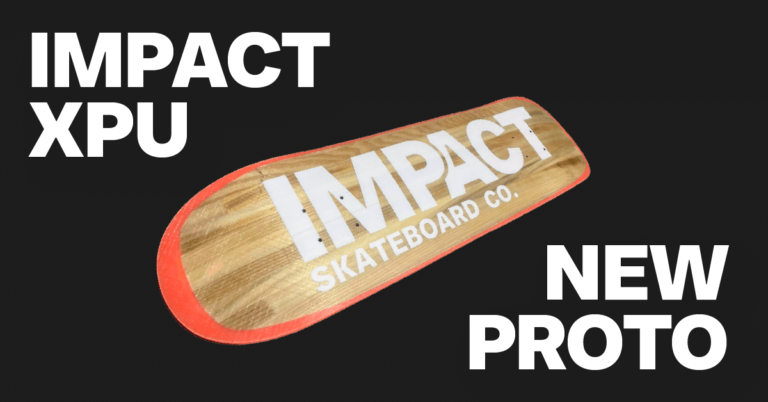Razor Tail Test: Maple vs Impact XPU
Every seasoned skater has experienced it — razor tail.
That sharp edge at the back of your board that easily chips, kills your pop, and sometimes even cuts your legs.
We built the Impact XPU deck to handle that kind of damage better. But how much better, exactly?
To find out, we put it head-to-head with a traditional 7-ply maple deck in a controlled abrasion test.
It was clean. It was brutal. And it gave us numbers.
The test setup
We designed a rig to simulate repeated tail drag — not to mimic every possible skate scenario, but to create a clean, measurable comparison between the two deck edges.
Test conditions:
• 5 kg of force applied directly to the tail
• Tail angled at 26° to the sanding surface
• Water-cooled 80-grit sanding belt (self-cleaning for consistent abrasion)
• No pauses, no resets — same surface, same session, back-to-back
Imagine dragging your tail across a rough ledge for 10 minutes straight — while it’s constantly raining.
The results
The maple deck wore down fast — completely abraded after just 53 seconds.
The Impact XPU kept going… and going… and finally stopped at 11 minutes and 46 seconds.
That’s over 13× more abrasion resistance in a controlled lab environment.
Even for us, that level of difference was a surprise.
We also followed up by measuring actual material loss and tail thickness — you can see the photos and timestamps in the full test video below:
Lab numbers vs real skating
Here’s the thing: lab tests are clean. Skating isn’t.
In the real world — heat, friction, uneven surfaces, coping, and wax— and all of that changes how a board wears.
What we learned in the lab is useful, but it’s not the full picture.
Based on our experience — and what skaters riding the deck tell us — the real-world durability difference feels more like 3–5×, not 13.
One of our team riders, Liam, said it best:
“I skate a lot and my boards still aren’t razor tailed after 3 months.”
Another skater, Magnus, told us:
“It’s only like 2–3× better. But I would have been worse with another board.”
Other skaters have backed that up in product reviews:
- “Much more durable against razor tail” – Anonymous
- “Extremely hard to get razor tail” – Enzo Q.
- “Slower edge degradation than other decks I’ve ridden” – Oto G.
- “Takes no damage to the sides like other decks do” – Anonymous
So while it’s not indestructible, it really does last longer, especially for skaters who are tough on their tails.
What makes the difference
The key difference comes down to edge material.
Impact XPU decks use polyurethane (PU) edges — and that’s where the advantage really starts to show.
Where classic maple chips, splinters, and wears quickly, PU is different. It absorbs impact, resists abrasion, and doesn’t delaminate. It wears down much slower — and more evenly — without those sharp razor edges showing up after just a few sessions.
If you want a closer look at how the whole construction works, we’ve got a short video breaking it down: https://www.youtube.com/watch?v=8T3bdCEOeiM
Beyond durability: less waste, longer life
Another benefit of this construction? Fewer decks in the bin — and fewer trees cut down.
If a board lasts longer, that means fewer replacements, less wood waste, and fewer shipments.
It’s not a perfect environmental solution, but it’s a step in the right direction — especially for skaters who ride hard and care about the impact their gear makes.
We built this deck to last longer not just for performance — but because that longevity matters.
Want to try it?
You can grab the deck here:
Or find a local dealer in your area:
We’re also always up for joining local jams, contests, or community events.
If you’ve got something going on — reach out. We’d be stoked to come by, meet skaters, and bring some demo decks to ride.
Summary: Maple vs XPU – key differences
| Feature | 7-Ply Maple | Impact XPU Composite |
|---|---|---|
| Abrasion resistance (lab) | 0:53 | 11:46 |
| Edge chipping | Common | Minimal (PU edge) |
| Water resistance | Swells/delams | Sealed PU sides |
| Tail razor time (street) | Fast | Slower: 3–5× longer |
| Deck feel | Classic pop | Snappy, slightly stiffer |
| Waste / eco impact | Short lifespan | Fewer replacements |
Thanks for reading — and skating with us.
Let us know what you think in the comments or drop us a message. We’d love to hear from you.








Those results honestly blew us away.
Our first reaction was: “Who’s even going to believe that?”
But hey — lab numbers are one thing, and skating is another.